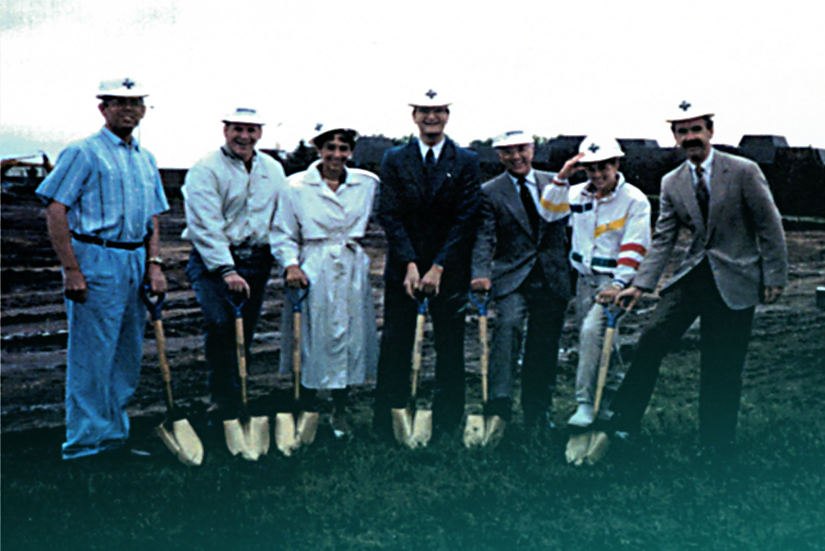A Brief History of Ambulatory Surgical Centers (ASC)

Ambulatory Surgical Centers, like St. Cloud Surgical Center, started their roots in the 1960s and have seen immense growth throughout the last 50 years and counting. Having celebrated our 50th Anniversary in 2022, we are honored to have been a part of this community since the early days. As the second surgical center in the country, it is safe to say that St. Cloud Surgical Center and the late Dr. Joseph Belshe have left their mark on the world of ASCs.
While going to an ASC vs. a traditional hospital for your next procedure may be relatively new, the concept is not. And through years of research, paired with technological advancements, it is just as safe and effective to receive care at a same-day surgery center as a hospital, not to mention often more affordable.
The ASC model has grown from an idea to a flourishing business model, providing patients with a mission to provide quality, safe, and efficient patient care. Take a trip down memory lane with us as we dive deeper into the world of ASCs from inception to the present day.
The ASC Community from Inception to Present Day
A timeline from www.ascassociation.org/50yearsofascs/timeline.
1960s – Healthcare professionals and government officials begin calling for affordable, accessible, quality outpatient surgery alternatives.
1966-1967 – Facilities dedicated to providing ambulatory surgery care open in conjunction with hospitals in California and Washington, DC.
1968 – Wallace Reed, MD, and John Ford, MD, develop objectives and commit their idea for a freestanding ambulatory surgery facility to paper for the first time. They begin collecting endorsements from governmental bodies and members of the healthcare community to obtain financing for the project.
1970 – The first ASC opens for business on February 12. By the summer, 225 surgeons working in that ASC have the support of more than 40 insurers.
Early 1970s – St. Cloud Surgical Center is the 2nd surgical center in the country, opening its doors in 1972—a handful of other ASC’s opened throughout the United States thereafter.
1971 – The American Medical Association (AMA) adopts a resolution endorsing the concept of outpatient surgery under general and local anesthesia for selected procedures and selected patients.
1973 – The American Society of Anesthesiologists (ASA) established some of the first standards for the ASC community when it released “Guidelines for Ambulatory Surgical Facilities,” a list of nine criteria approved by the ASA House of Delegates.
1975 – Rapid growth—A total of 42 surgery centers were in operation in the US by 1975.
1976 – An additional 25 facilities open.
1979 – The ASC community continues to grow as the number of ASCs reaches triple digits.
1982 – Medicare approves payment to ASCs for approximately 200 procedures.
1987 – Medicare expands its list of covered procedures in ASCs to 1,535 procedures.
1988 – The number of ASCs in the United States reaches 1,000.
1994 – Beth Derby is elected the first woman president of the Federated Ambulatory Surgery Association (FASA) and becomes the first nurse to serve in this capacity.
1995 – ASCs go international with the formation of the International Association for Ambulatory Surgery (IAAS).
1997 – FASA moves to expand services to its members and demonstrate the quality provided in ASCs by offering an industry-wide Outcomes Monitoring Project.
2004 – More than 4,000 ASCs in the US perform eight million surgeries annually.
2006 – The ASC community establishes the ASC Quality Collaboration to develop ASC quality measures, publicly report data, and support high-quality care in ASCs.
2010 – The number of ASCs exceeds 5,000.
2011 – More than 5,300 ASCs in the United States perform 23 million surgeries annually.
2015 – The number of ASCs grows to 5,400.
2020 – On January 1, CMS finalizes the addition of total knee arthroplasty (TKA) and six new cardiac codes to the ASC-payable list.
A lot can happen in 50 years, and we are proud to say we’ve been there since the beginning, providing innovative, top-of-the-line care to patients in Central Minnesota. If you are considering our facility for your next surgery and have questions, please contact us today to discuss your options. We would appreciate the opportunity to care for you.
SOURCES:
https://www.ascassociation.org/50yearsofascs/timeline